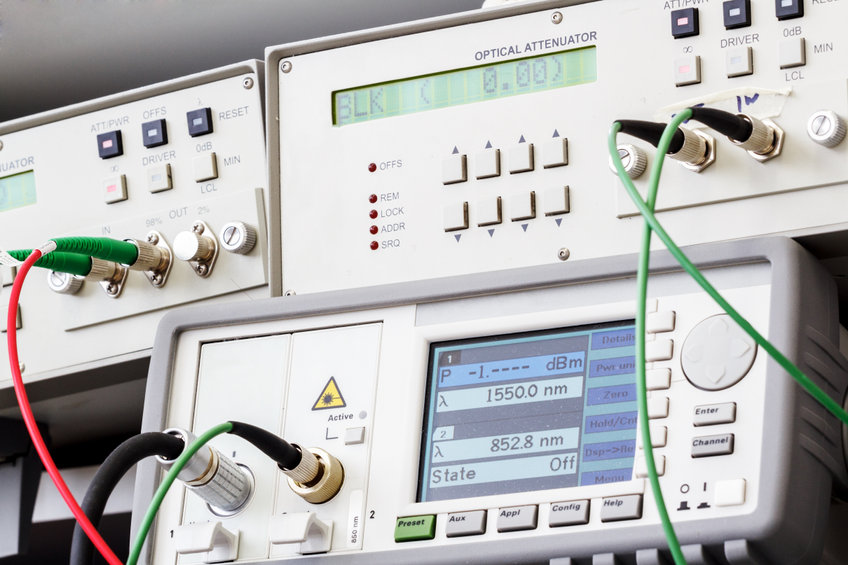Innovative robotic vision solutions optimize automation and precision.
Innovative robotic vision solutions optimize automation and precision.
Blog Article
Exploring the Conveniences of Optical Fiber Examining for Enhanced Interaction Solutions
The significance of optical fiber testing in modern interaction systems can not be overemphasized, as it works as a foundation for making sure network dependability and efficiency. Making use of innovative methodologies such as Optical Time-Domain Reflectometry (OTDR) and insertion loss analysis, organizations can not just recognize mistakes but additionally optimize their setups. This proactive testing technique has profound effects for signal quality and operational effectiveness, raising the question of exactly how these techniques add to long-lasting sustainability in an ever-evolving technical landscape. Understanding these characteristics is crucial for stakeholders intending to maintain an one-upmanship.
Relevance of Optical Fiber Testing
The value of optical fibre screening can not be overstated in today's data-driven setting. As companies increasingly count on high-speed information transmission for daily operations, the stability and performance of optical fibre networks are critical. Evaluating ensures that these networks can support the vast quantities of information produced and sent flawlessly, cultivating efficient communication and connection.
Optical fibre screening serves multiple vital functions, including confirming installation high quality, recognizing potential mistakes, and establishing general system performance. Routine testing can prevent pricey downtimes and solution disturbances, allowing organizations to maintain operational connection. It helps in conformity with sector standards and laws, ensuring that fiber optic installations satisfy needed requirements for safety and security and dependability.
In addition, screening can enhance the durability of fibre optic systems. By proactively determining concerns such as signal loss, attenuation, or adapter failings, companies can deal with problems before they rise, therefore expanding the life of their infrastructure. In recap, optical fibre screening is not just a technological demand but a critical financial investment that boosts network integrity, maximizes efficiency, and inevitably sustains the development and efficiency of modern-day communication systems.
Secret Testing Approaches

OTDR is an important strategy used to recognize faults, procedure splice losses, and assess the total stability of a fibre optic web link. By sending a pulse of light down the fiber and evaluating the mirrored light, technicians can identify areas of mistakes and review the network's performance over cross countries.
Insertion loss testing gauges the quantity of signal loss that takes place when light travel through a connection or splice. This technique is critical for confirming that connections fulfill specific loss limits, which is essential for keeping optimum efficiency in communication systems.
Optical return loss testing measures the quantity of light mirrored back towards the source due to flaws in the fibre or links. High return loss worths indicate much better performance and lowered signal degradation.
With each other, these screening approaches offer a thorough evaluation of fiber optic networks, ensuring their reliability and performance in diverse communication applications.
Effect On System Efficiency
Effective optical fibre screening directly influences the total efficiency of communication systems. By ensuring the integrity of fibre optic cables, testing recognizes prospective mistakes such as attenuation, splice loss, and port misalignment. These concerns can dramatically degrade signal top quality, resulting in disturbances and lowered data transmission speeds.

In click to find out more addition, regular optical fibre testing adds to long-term system sustainability. It allows very early discovery of deterioration, enabling prompt maintenance and upgrades prior to major failures happen. This not just extends the life expectancy of the framework but also makes sure that communication systems continue to be competitive in terms of efficiency.
Cost-Effectiveness and Performance
Cost-effectiveness is a vital consideration in the release and upkeep of optical fibre networks. Applying durable optical fiber testing treatments can dramatically reduce functional expenses by identifying problems before they intensify right into significant problems. robotic vision. By spotting look at more info faults, attenuation, and various other performance hindrances early, companies can stay clear of costly repair work and downtime, which can interrupt solutions and result in income loss
Moreover, efficient testing methodologies streamline the installment process, allowing service technicians to function better. This converts to decrease labour prices and faster task conclusion times. Advanced screening tools, such as Optical Time Domain Reflectometers (OTDRs), makes it possible for a precise analysis of fibre quality, guaranteeing that just optimum materials are utilized, thereby decreasing waste.
Regular screening additionally contributes to better source allowance. By understanding the network's efficiency, organizations can make informed choices concerning upgrades and expansions, ensuring that financial investments are made where they are most needed. In summary, optical fibre screening boosts cost-effectiveness and performance, supporting the long-term sustainability and competitiveness of interaction systems in a significantly requiring market.
Guaranteeing Long-Term Reliability
Applying extensive optical fiber testing not only boosts price savings and operational efficiency but also plays a critical role in see this page guaranteeing the lasting integrity of communication networks. Constant screening techniques, consisting of attenuation and transmission capacity analyses, help determine possible degradation in fiber performance prior to it causes service interruptions.
By utilizing innovative testing approaches, network operators can pinpoint mistakes or weaknesses in the fibre facilities, enabling timely remediation. This positive approach lessens downtime, making sure that interaction systems remain functional and reliable. Additionally, regular screening adds to the growth of a much more resistant network, as operators can adapt and enhance their framework based upon real-time information insights. optical fibre testing equipment.
Additionally, guaranteeing compliance with industry criteria through optical fiber testing strengthens the high quality and integrity of the entire interaction system. This adherence not just bolsters self-confidence among stakeholders but additionally lines up with regulatory requirements, which are significantly rigorous.
Verdict
Finally, optical fibre screening offers as a fundamental component in enhancing communication systems. By employing different testing techniques, such as OTDR and insertion loss assessments, networks can achieve optimal efficiency and integrity. The proactive recognition of faults not just improves signal quality yet additionally decreases downtime, inevitably adding to cost-effectiveness and operational effectiveness. Furthermore, adherence to market standards fosters stakeholder confidence, making sure the long-lasting sustainability of interaction infrastructures in a progressively data-driven landscape.
Report this page